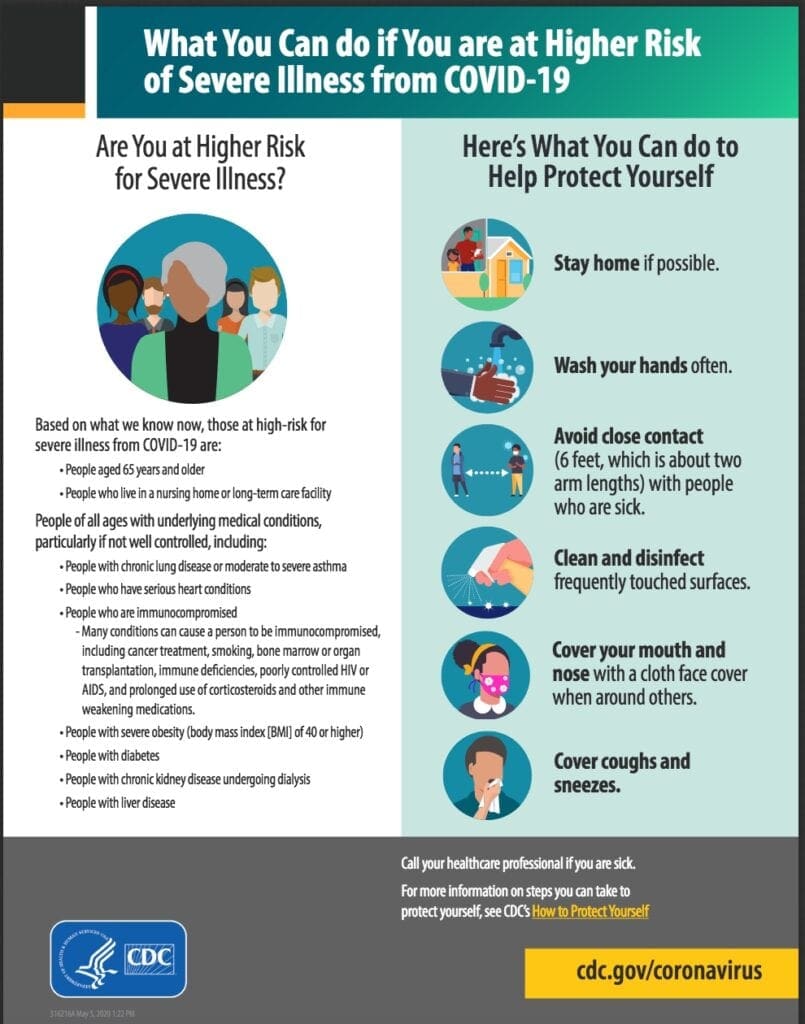Search Posts
Recent Posts
- Rose Island experts Sean O’Connor and Michael Simpson – G. Wayne Miller, Ocean State Stories June 11, 2025
- Time for Sour Grapes! – 6.11.25 – Tim Jones June 11, 2025
- Rhode Island Weather for June 11, 2025 – Jack Donnelly June 11, 2025
- What you should know about Social Security if your spouse passes away – Cheryl Tudino, SSA June 11, 2025
- It is what it is… 6.11.25 – Jen Brien June 11, 2025
Categories
Subscribe!
Thanks for subscribing! Please check your email for further instructions.

Coronavirus and the disparity of age…no time to waste
In early March, Rhode Island knew it had a problem with its large proportion of seniors living in the state. Because the coronavirus targeted seniors like a mosquito targets those in a group that “tastes good”, and for which its bite will be the most troublesome.
Seniors, as has been clear from day one, are disproportionately prone to do less well with the coronavirus. Adding a high percentage of those with underlying disease such as diabetes, heart disease, respiratory issues, or being overweight, and the risk becomes even more adverse. Add to that living in congregate settings (nursing homes, assisted living units, group homes) and you add even another negative layer to good outcomes. And in the case of the coronavirus, not only can the outcome be not good, it can be deadly.
In Rhode Island 78% of deaths from the coronavirus, or COVID-19, are in congregate living situations. A full 91% of deaths are people over 60; 57% over 80 years of age.
In what they call the “…the work horse tool for understanding and combating the COVID-19 pandemic”, an MIT published study lays out medical reasoning for a “targeted lockdown” of older individuals as the country moves forward.
“A Multi-Risk SIR Model with Optimally Targeted Lockdown” was published this month by MIT’s National Bureau of Economic Research.
The report talks about recognizing the high mortality rates of older individuals and a relatively high value of life as a social objective when considering the country’s pandemic response.
In its “Conclusion” section:
“Differential lockdowns on groups with differential risks can reduce both the number of lives lost and the economic damages significantly. We also find that the majority of these gains can be achieved with a simple targeted policy that applies an aggressive lockdown on the oldest group and treats the rest uniformly”.
In early March it was made clear that those over 60 or 65, and particularly those over 70 were considered almost a protected class in surviving this pandemic. This feeling came by a consistent rate of death among those 60 and over in Rhode Island and the country. The older, the higher proportion of death. There is also a compounded factor when you add a filter of living in assisted living, or long-term care settings.
The MIT authors take their research conclusions as “the main take away message from the paper”. In addition, if these protocols are combined with identification and isolation of infected individuals, even greater gains can be had, especially when there is social distancing between groups, and even lead to the removal of the need to have lengthy or even any lockdown of younger age groups.
In the study’s conclusion section: “Semi-targeted policies may be easier to implement because the strictest lockdowns are for the older group and can be interpreted as a form of “protective custody” for that group, meaning that it is mostly to protect the group itself, not to reduce the externalities they create on others. The same applies to measures to reduce interactions between this group and the rest of the population.”
In California
The California Employment Development Department rules state that, normally, people who turn down a job offer are denied unemployment benefits, unless the position is “unsuitable.” However, a job could be deemed unsuitable if the employee is older than 65, has a weakened immune system, or has a chronic health condition that means COVID-19, the coronavirus disease, poses more of a threat.
In Washington state:
Broad legislative protection for high risk, older workers was implemented in the state to first have serious COVID-19 issues. That legislation has :
- Employers are prohibited from failing to utilize all available options for alternative work assignments to protect high-risk employees, if requested, from exposure to the COVID-19 disease, including but not limited to telework, alternative or remote work locations, reassignment, and social distancing measures; and
- Employers are prohibited from failing to permit any high-risk employee in a situation where an alternative work arrangement is not feasible to use any available employer-granted accrued leave or unemployment insurance in any sequence at the discretion of the employee; and
- In the event the employee’s paid time off exhausts during the period of leave, employers are prohibited from failing to fully maintain all employer-related health insurance benefits until the employee is deemed eligible to return to work; and
- Employers are prohibited from taking adverse employment action against an employee for exercising their rights under this Proclamation that would result in loss of the employee’s current employment position by permanent replacement.
As Rhode Island ramps up its opening, considerations for the protection of seniors seems to have waned. A consistent 80-100 deaths among its very old and nursing home bound have little special attention to them week after week. This week, Rhode Island completed a testing in all facilities, of both residents and staff. It will be interesting to see the results of that testing – particularly among staff.
When asked how differently Rhode Island will treat its seniors when it comes to going back to work, recognizing that seniors are working longer into their “golden years”, there is ‘no difference’ according to the Governor – “Be brave, be careful and go back to work” with the onus for protection put on individual employers to accommodate the older worker’s safety.
Some factors to consider that are unique to at least Rhode Island: teacher pensions have been adjusted to require teachers to work into their early 70s in some cases to qualify for full pension amounts. Social security has also gone as long as 68 or 70 to reach the maximum benefit. Rhode Island has more “old-olds” than any state in the country. We also have large residential settings for seniors, some with hundreds of single or multi-bedroom units – over 85 settings at recent count.
As Rhode Island talked about its Phase 1, 2, 3 plan, it was first mentioned that seniors may have to “hold back” – yet in back-to-work plans, there is no holding back, or provision of extra benefits to allow them to continue to shelter for their safety. All this while cautioning that the state will have “zero tolerance” for discrimination of any kind, including age, in the workplace. How will employers react to this new responsibility?
Advocates for seniors, or elders, or older Americans will need to become active on this issue and decide what platform they want to promote. So far, none have issued statements about back-to-work for those over 60, 65, or 70, or those with a combined underlying disease situation.
As in so many inequities in life, those who can afford to sit out this high risk activity of going “all in” as the state opens up, will be free to elect this option. Those who can’t afford to, won’t.
The coffee shop woman who works to supplement her small retirement will stand as she has for hours daily serving customer after customer, wearing her mask, washing her hands. Most know the risk they are taking. The hardiest may pooh–poohed it all. The fearful may work more silently, cautiously.
As a vaccine rushes to development, as treatments flourish to experimentation, both can’t happen soon enough. There’s simply no time to waste.
To read more the full study published by MIT, go to: https://www.nber.org/papers/w27102.pdf
From the CDC Plan to Reopen America:

